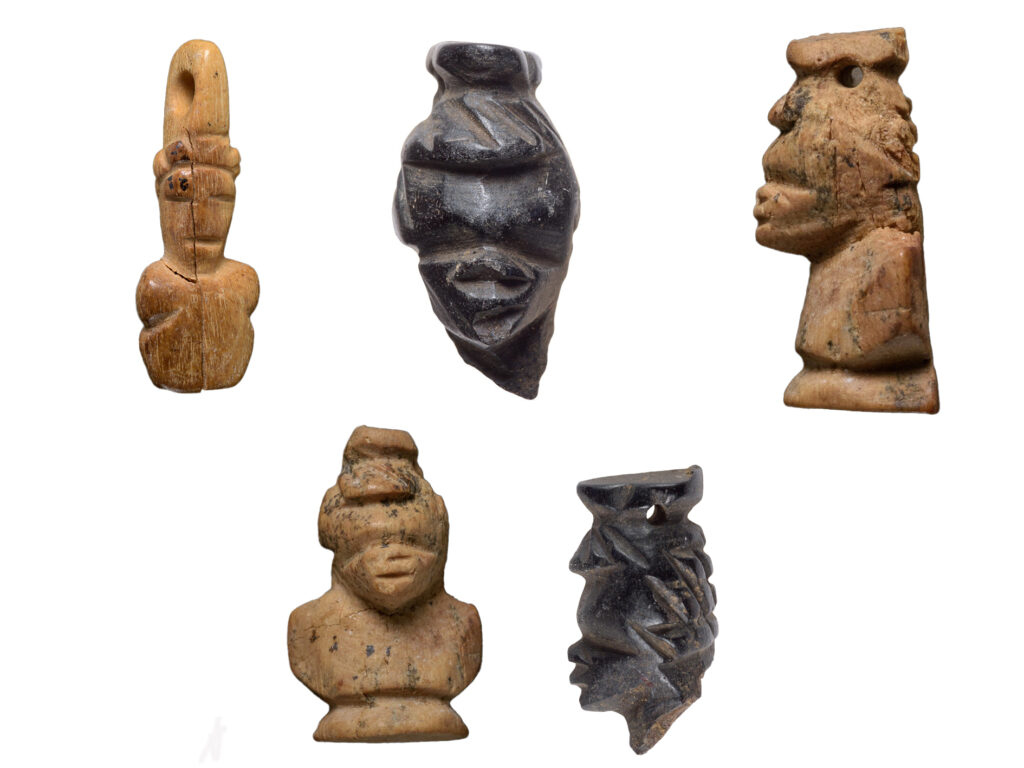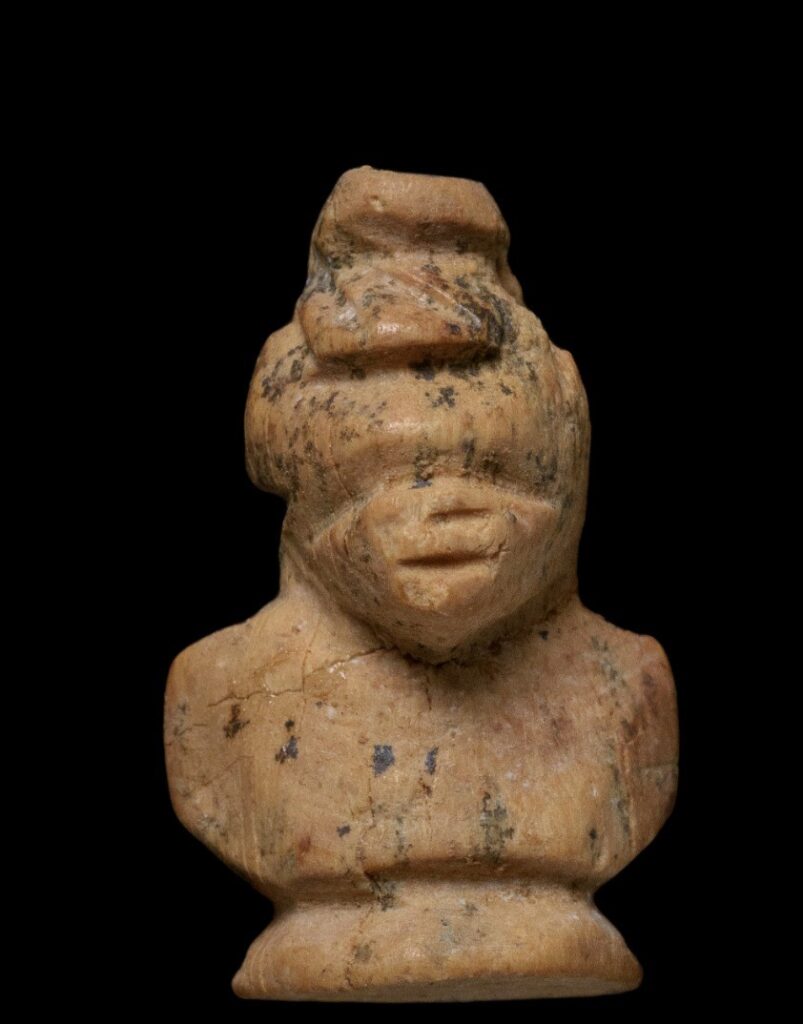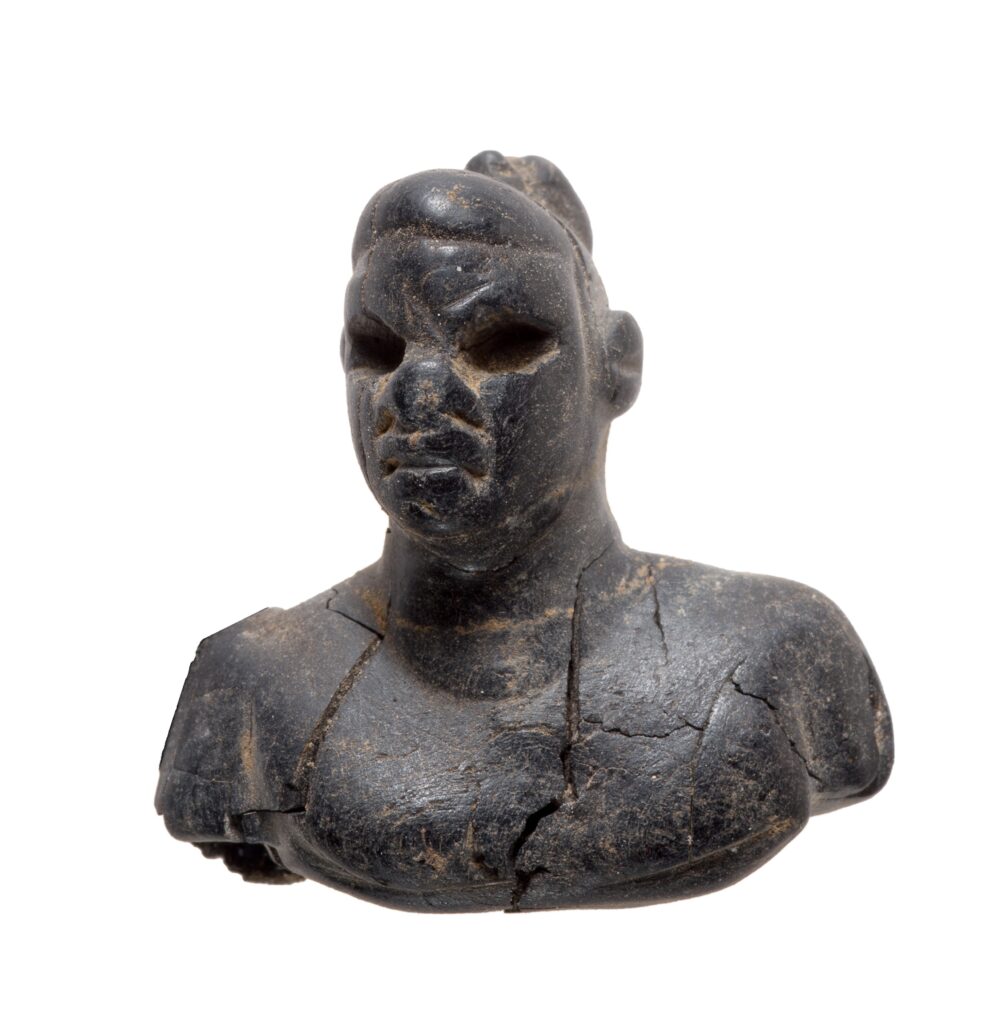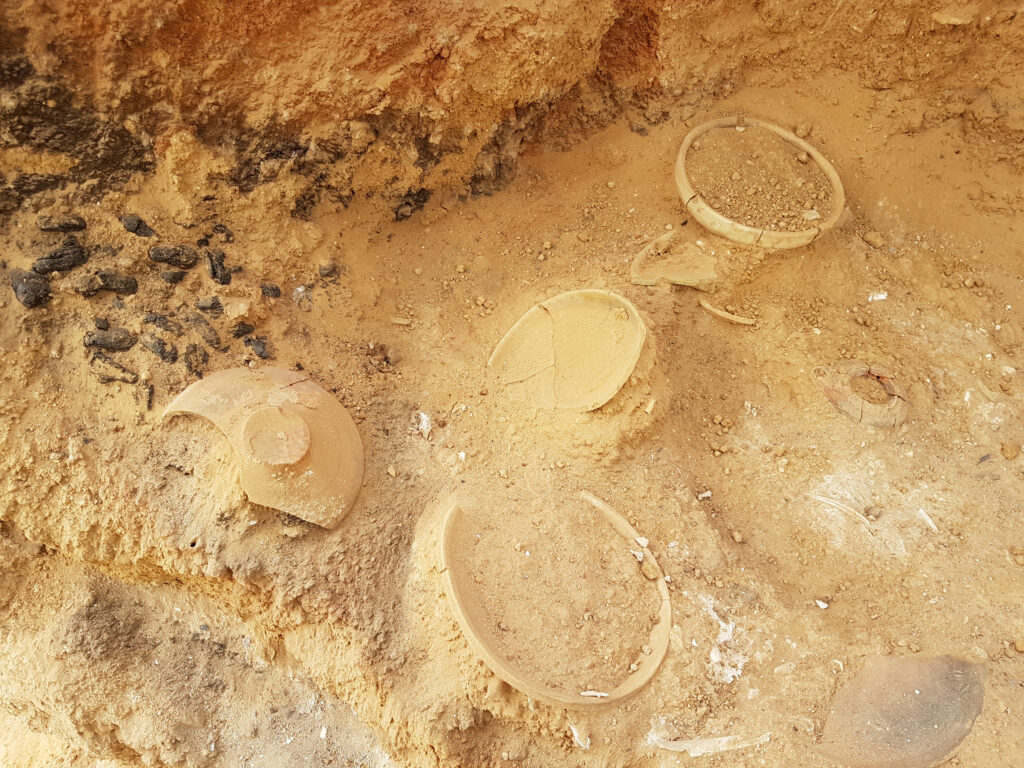In a remarkable archaeological discovery that challenges our understanding of cultural diversity in ancient Israel, researchers have uncovered five rare figurines—including distinctive heads of African figures carved in black wood—at a Byzantine-era burial site in the Negev desert. Dating back approximately 1,500 years, these exceptional artifacts were found in the graves of women and children during excavations at Tel Malḥata in the Arad Valley.
The groundbreaking research, conducted by Dr. Noé D. Michael of the Israel Antiquities Authority and the University of Cologne in Germany, along with colleagues Svetlana Tallis, Dr. Yossi Nagar, and Emil Aladjem from the Israel Antiquities Authority, has now been published in Issue 117 of the prestigious ʼAtiqot journal.

Heads of carved African figures discovered at the site may attest to the origin of the buried people. Photo: Dafna Gazit, Israel Antiquities Authority
Evidence of Christian Communities with African Connections
“The figurines indicate that a Christian community existed in southern Israel about 1,500 years ago, with some members potentially originating from Africa,” the researchers explain. What makes these artifacts particularly significant is their craftsmanship and materials—carved from bone and ebony wood, a precious raw material imported from southern India and Sri Lanka.
The figurines depict men and women with distinctive African facial features and include holes for suspension, suggesting they were worn as pendants. “These weren’t merely decorative objects,” note the researchers. “They appear to have been intimate personal items carrying profound significance related to identity, tradition, and ancestral memory.”

Figurines that were discovered in the IAA excavation. Photo: Dafna Gazit, Israel Antiquities Authority

Preserved Through the Ages
The exceptional preservation of these artifacts provides a rare window into Byzantine-era cultural practices. Found carefully positioned alongside the remains of women and children in Christian burials dating to the 6th-7th centuries CE, the figurines were part of a broader collection of grave goods that included:
- Fine glassware
- Stone and alabaster jewelry
- Bronze bracelets
According to the research team, “It’s possible that these figurines represented ancestors, reflecting traditions passed down through generations even after the adoption of Christianity.” In one particularly poignant case, researchers believe a woman and child buried side by side—each accompanied by one of the figurines—may have been mother and son.

Pottery bowls, probably used in a meal related to the burial. Photo: Svetlana Talis, Israel Antiquities Authority
Cultural Crossroads at Tel Malḥata
During the Roman-Byzantine period, Tel Malḥata served as a major intersection for trade routes connecting southern Arabia, India, and Africa. The presence of these distinctly African figurines in local Christian graves dramatically expands our understanding of the region’s cultural diversity approximately 1,500 years ago.

The excavation area. Photo: Svetlana Talis, Israel Antiquities Authority
Eli Escusido, Director of the Israel Antiquities Authority, emphasizes the human dimension of this discovery: “The finds from Tel Malḥata are moving not only from an archaeological perspective but also on a human level. They serve as a reminder that the Land of Israel has always been a crossroads of cultures and peoples—individuals arrived here, integrated into the local population, and yet still carried with them traditions and beliefs from distant lands.”
Implications for Understanding Ancient Migration
This discovery challenges previous assumptions about the demographic makeup of Byzantine-era Negev communities and suggests more complex patterns of migration, settlement, and cultural exchange than previously understood. The African features of the figurines, combined with their presence in Christian burial contexts, point to a multicultural society where diverse traditions coexisted and blended.
The research team continues to analyze these artifacts, hoping to determine more precisely their origin and significance. Advanced techniques including isotope analysis may help identify whether the individuals buried with these figurines were indeed migrants from Africa or descendants of African settlers who maintained cultural connections to their ancestral homeland.
A Window into Ancient Lives
What makes these discoveries particularly remarkable is how they connect us to individual human stories across the centuries. The figurines—small enough to be worn close to the heart—speak to personal attachments, cultural identities, and family bonds that transcended geographical boundaries.
As archaeological techniques continue to advance, these rare artifacts from Tel Malḥata provide not just scientific data but also a poignant reminder of the complex, interconnected human histories that have always characterized the Levant—a region that continues to serve as a crucial crossroads between continents and cultures to this day.
For more information on this discovery and other archaeological findings, visit the Israel Antiquities Authority website or consult Issue 117 of the ʼAtiqot journal.




